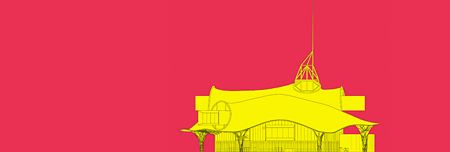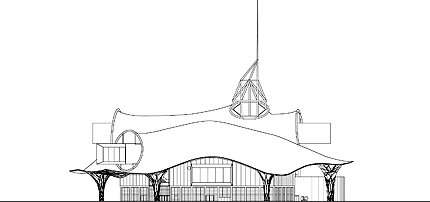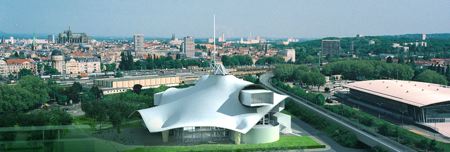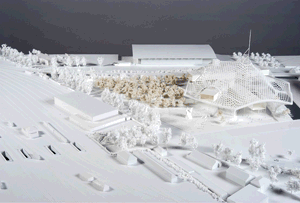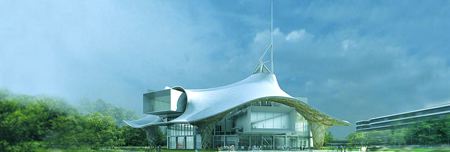VJing 11/11/05
Originally uploaded by steamshift.
Image from my recent VJ gig at the Soul Cellar 78 in Southampton, UK. Doing visuals for the club and the live band 8 Fold.

An archive of our old posts.
Originally uploaded by steamshift.
Image from my recent VJ gig at the Soul Cellar 78 in Southampton, UK. Doing visuals for the club and the live band 8 Fold.
Originally uploaded by steamshift.
Image from my recent VJ gig at the Soul Cellar 78 in Southampton, UK. Doing visuals for the club and the live band 8 Fold. This is my current control setup. What it really needs most is a local monitor actually showing the visuals!
Well more accurately, tonight at the Soul Cellar I'm doing my first independent VJ gig, providing visuals for a band called 8 Fold. Izziittt!
Now, don't get wrong, I love my mac; I love the way it makes it so easy to develop really interesting visual effects and I have a lot to thank it for in terms of keeping me employed. But this entry is about the world of analogue.
My work such as it is, is pretty firmly entrenched in the digital world; I use computers to overlay layer upon layer of graphics and texture in order to create the look and feel that I want to achieve. And often the best results come from an experiment that has gone in a different direction to the one that I had expected. But does that process allow for the space between the digital points? In tech terms, a curve is digitally processed as a series of steps, but remains a curve in the analogue sphere.
I have no urge to ‘go analogue’; much of what I do would become hugely more difficult (and I haven't the time to overcome obstacles like that). But perhaps there is a paradigm that is easy to get lost in the wealth of opportunity that the digital world represents.
An example; at home I have a 16mm film projector which I am trying (somewhat slowly) to get working. It will play back at a certain speed (but probably waver), it may chew the film, it certainly hasn‘t got massively high quality optics - complete with dust and the like, it requires a physical act to change from one film reel to another - a process of threading and winding, and all of that is before we come to the film itself. The film I’m most interested in viewing is pretty old, has been in a garage, is a little mouldy, has been badly affected by light and is scratched.
Now, to someone who wants to watch a film, a digital projector running off a DVD, is great. But the old projector and the old film, mix together to form a story; not the one actually on the film but the one that is the film - the quality of it. It tells the story of how it has been kept; for how long. It has developed.
Time doesn‘t affect digital media; which is why we like it. But I wonder if we don’t lose something rather precious in all of the progress. I love my digital camera, but I lose the suspense of the prints coming back; it‘s instant but there’s something wonderful about developing your own prints (not that I have for a long time but you get the idea).
It would be interesting to have for example a quartz composer patch that worked based on the time and date and degraded the work based on when it was originally created. But is this cheating?! The more full on approach is to put the compositions onto film; but then you lose the ability to generate it real-time.
Don‘t know really. Just a thought. I would like to do some work with analogue signal processors post output, pre projection. That’d be pretty cool. Looks like a bunch more stuff to get my head around! Hey ho - such the life of an artist!
SteamSHIFT out
Try as I might, I find it so hard to maintain consistent motivation to do my day to day work. I just want to play with quartz composer, build visuals, work on ideas for show (ooh … more later). And so on.
Work is the curse of the drinking classes. Indeed well said Ozzie (Wilde that is, of course!).
It's funny how people burn out with software; when Konfabulator came out, there was loads of hype about what it could do and what you could achieve, but then interest seemed to wane as most of what came through seemed to end up being variations on a few decent ideas. Obviously this is the same with Dashboard.
Although there is still quite a lot of interest in Quartz Composer, on the surface it seems to be suffering from the same kind of problem, in that most of what I am seeing published, is variations on the RSS reader theme (with a few clocks thrown in for good measure).
Now, I really hope that this doesn't spell a slow down in interest for the application, because I really think it has huge potential for generating interesting graphics
Maybe the question I should be asking is “Is it merely a lack of inspiration on the part of erstwhile developers for it, that causes a piece of software to have a limited life-span, or does it more have to do with fundamental limitations in that software?”
Read on!
In the case of Quartz Composer I suspect that the QC developer community is still pretty small and therefore most of what is being produced is by new people dabbling, and that more serious users are just not publishing at the moment. However, I think there are a few areas that could be an issue down the line (by no means a definitive list and I'm well aware that some of these may be my ignorance rather than a missing or underpowered feature):
Outputs: I don't think I am the only one who would love to see QC integrate further with other applications. For instance, it would be really good if it could act as a MIDI controller - with MIDI output as well as input.
And on the topic of outputs, it would be awesome if within the QC app, you could specify where to output to. What I'd love to be able to do (possibly unrealistic but I can wish) is simultaneously output to my monitor AND to the firewire port so I can tape it onto DV or take it into a second Mac without having to go analogue.
DV-In: this one is a fix request: just seems horribly flakey. I have tried using live video in a performance twice now, and once the camera has switched itself off or the link has been lost for any reason, you have to restart QC. Not an option live! So any way that it could auto re-connect when the feed is there again would be awesome.
Internet connectivity: or something! Kind of goes with the MIDI out thing. If I want more than one Mac running QC or other apps, I'd like one QC composition to act as the master and the other computers as the slaves. Without decent network connectivity from within QC, it makes it very difficult. Whilst we are at it - how about a Webkit patch (just for fun!)
Cocoa: It's way too much to expect most QC users to learn how to create a cocoa application to act as a wrapper for their composition, especially as most of the time those wrapper applications will be very straightforward. Perhaps a system where you can create an application from an extensible list of predefined application templates directly from within QC (like creating a projector in Macromedia Director).
Extensibility and programming: For me, coming from a multimedia background, it is taking me some time to get my head around the way that QC does things. There have been loads of occasions when I have thought, this would have taken me minutes in Director using Lingo. It would be great if the javascript patch could be expanded (and perhaps converted at run time into a faster format?) to include programmatic generation of images, etc.
Structures: Again from a programming starting point; it seems really difficult to create structures. Perhaps there could be some sort of patch that allowed you to create structures that could be then manipulated by both existing patches and also by javascript (automatically converting them into javascript arrays).
3D: Why is there not more of this stuff than there is? There is definitely more 3D stuff in PixelShox (which QC is based on). And I am aware there is a custom patch out there (but it doesn't seem to work hugely well). Just some simple renderers for 3D models in variable modes (flat rendered, wireframe etc.) would be really good. And better than that would be control of individual polygons.
While we‘re on the topic of 3D, I’d love to see some stuff that makes working in a 3D environment more straightforward. QC seems to have quite a strange metaphor for it's working space - in terms of z depth and layering etc. It may just be me - but I do get very confused at times!
Lastly, animation: I'd love to see some tools that allowed much greater control over the manipulation of shapes and objects over time.
Now I realise that some of these things might be unrealistic and that we may be getting into Motion territory, but these are just the areas where I have noticed limitations. Obviously limitations can force you to be more creative, but then, they can also stem the flow of creativity if you find you can't do something at all!
Finally, in all this what I would hate to see is anything that limited what you could do ‘live’. For me the ability to change my composition on the fly is what makes QC great!
SteamSHIFT out
I‘m getting to a point where I think I need to start to learn how to put together ’proper' mac applications. Cocoa seems to be the way to go and from what I have seen, the environment is as good as it gets, but heck this is quite scary territory for me - real programming not just scripting?!
I suspect cocoadevcentral will quickly become my friend.
Apart from that and apple's documentation, any suggestions for good material would be hugely appreciated. (NB I have only ever done Javascript, PHP, Lingo coding).
SteamSHIFT out
EDIT: From a macslash post:
What you really should read, and in this order
This one:
Programming in Objective-C (Paperback) [amazon.com]
Then this one:
Cocoa(R) Programming for Mac(R) OS X (2nd Edition) (Paperback) [amazon.com]
Then this one:
Cocoa Programming (Paperback) [amazon.com]
Then this one:
Core Mac Osx And Unix Programming (Paperback) [amazon.com]
Oh, and learn this one while reading the others:
Version Control with Subversion (Paperback) [amazon.com]
And you probably want to learn this as well:
http://www.amazon.com/exec/obidos/tg/detail/-/0596 001614/">Learning Carbon (Paperback) [amazon.com]
/EDIT
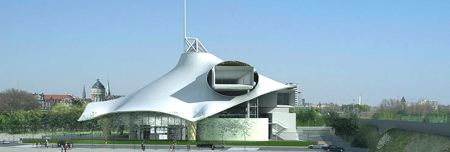
SHIGERU BAN ARCHITECTS (previously blogged - renowned for his use of paper as a building material) is designing the new Pompidou Centre in Metz.
Just beautiful.
